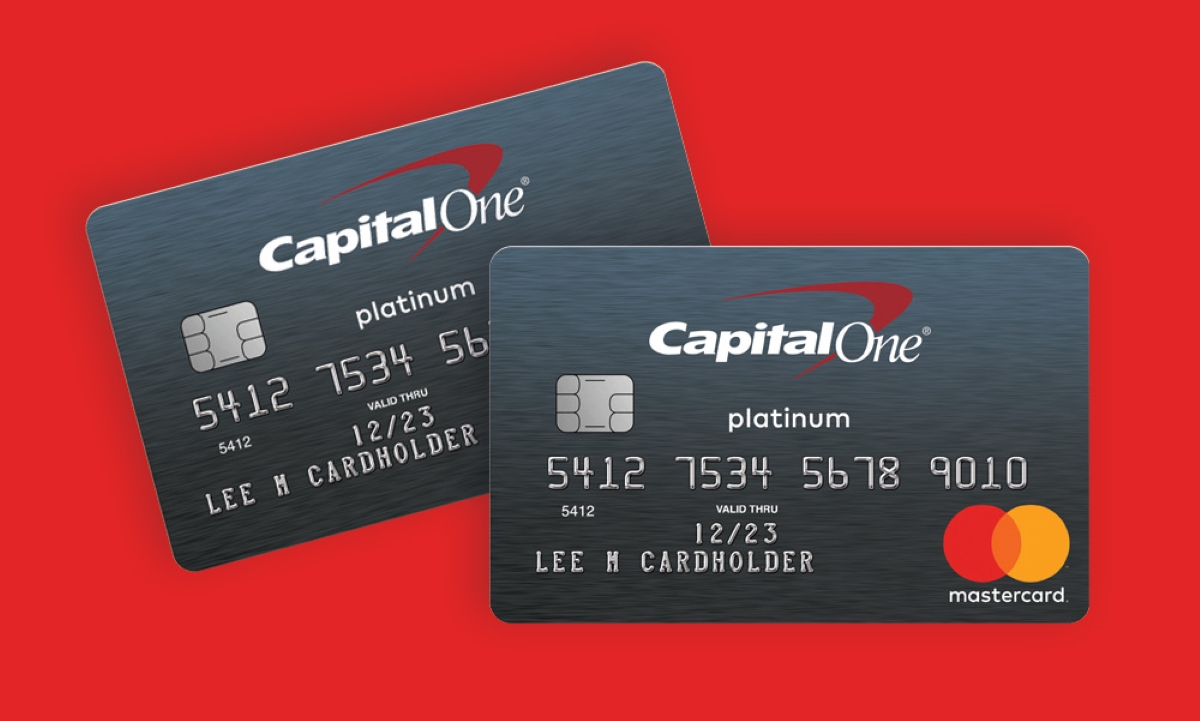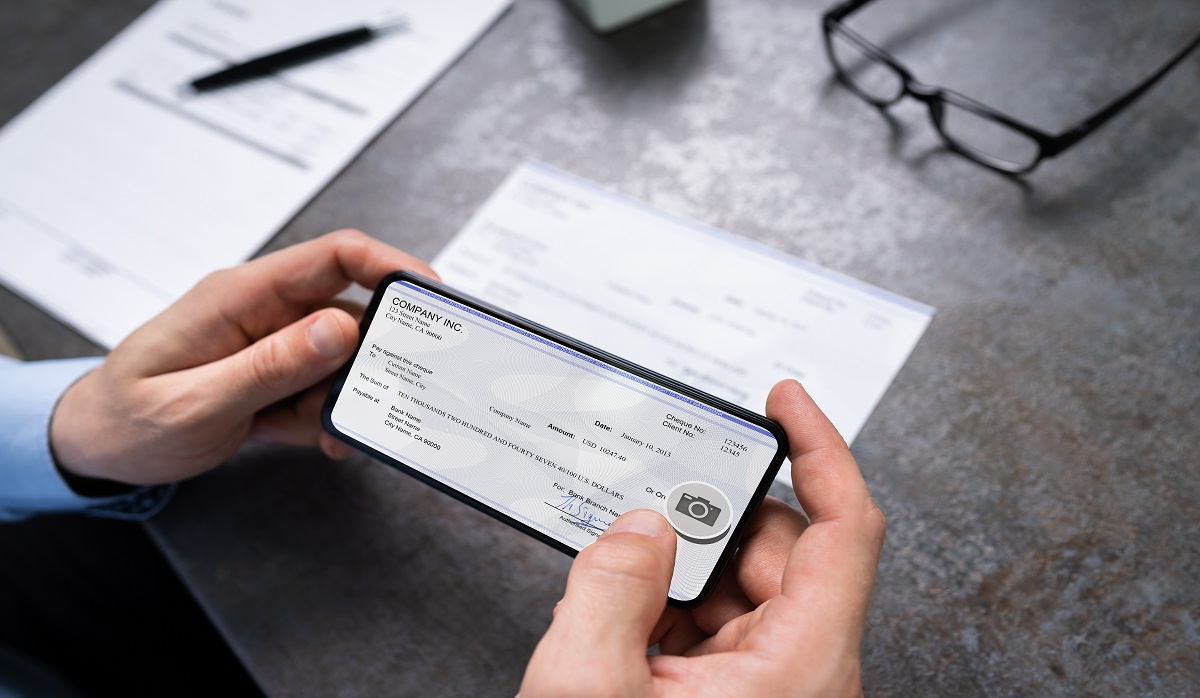Home>Finance>What Is The Minimum Payment On A $200 Secured Capital One


Finance
What Is The Minimum Payment On A $200 Secured Capital One
Published: February 27, 2024
Learn about the minimum payment for a $200 secured Capital One card and manage your finances wisely. Find out more about finance options.
(Many of the links in this article redirect to a specific reviewed product. Your purchase of these products through affiliate links helps to generate commission for LiveWell, at no extra cost. Learn more)
Table of Contents
**
Introduction
**
Secured credit cards are valuable financial tools that can help individuals establish or rebuild their credit. These cards require a security deposit, which serves as collateral and determines the card's credit limit. One popular secured credit card option is the Capital One Secured Mastercard, which is accessible to individuals with limited credit history or past credit challenges. Understanding the minimum payment requirements for a secured credit card, such as the $200 Secured Capital One card, is essential for responsible credit management.
In this article, we will delve into the concept of secured credit cards, explore the factors influencing the minimum payment on a $200 Secured Capital One card, and emphasize the importance of making timely minimum payments. Furthermore, we will provide practical tips for effectively managing minimum payments on a secured credit card to help individuals navigate their credit journey with confidence and financial acumen.
Navigating the world of credit cards, particularly secured credit cards, can be daunting for those who are new to credit or are working to rebuild their financial standing. By shedding light on the minimum payment requirements and offering actionable guidance, this article aims to empower readers with the knowledge and insights needed to make informed decisions and cultivate healthy credit habits. Whether you are considering a secured credit card or already have one in your wallet, understanding the nuances of minimum payments is crucial for leveraging this financial tool effectively and building a solid credit foundation.
Understanding Secured Credit Cards
Secured credit cards are designed to provide individuals with limited credit history or past credit challenges the opportunity to build or rebuild their credit. Unlike traditional unsecured credit cards, secured cards require a cash security deposit, which serves as collateral and determines the card’s credit limit. This deposit reduces the risk for the card issuer, making it possible for individuals with less-than-ideal credit profiles to access credit.
When a consumer applies for a secured credit card, they are typically required to submit a security deposit, which often becomes the card’s credit limit. For example, with the $200 Secured Capital One card, a $200 security deposit would typically result in a $200 credit limit. This deposit is refundable, provided the cardholder manages the account responsibly and fulfills their financial obligations.
Secured credit cards function similarly to traditional credit cards in that they can be used for purchases, and cardholders receive monthly statements detailing their transactions and outstanding balance. It’s important to note that while the security deposit mitigates the risk for the card issuer, the cardholder is still responsible for making timely payments and managing their credit utilization effectively.
By using a secured credit card responsibly, individuals can demonstrate their creditworthiness over time, potentially leading to an improved credit score and increased access to additional financial products and services. This makes secured credit cards a valuable tool for those looking to establish a credit history or repair past credit challenges.
Minimum Payment on a $200 Secured Capital One Card
When it comes to understanding the minimum payment on a $200 Secured Capital One card, it’s essential to grasp the fundamental concept of minimum payments on credit cards. The minimum payment is the lowest amount that a cardholder must pay toward their credit card balance each month to maintain the account in good standing. For the $200 Secured Capital One card, the minimum payment is typically calculated as a percentage of the outstanding balance, subject to a minimum dollar amount, as specified in the card’s terms and conditions.
For example, a common minimum payment structure might require the cardholder to pay either a specific dollar amount or a percentage of their outstanding balance, whichever is higher. This ensures that the cardholder is making progress toward reducing their balance and covering any accruing interest and fees. It’s important to review the specific terms of the $200 Secured Capital One card to understand the minimum payment requirements, as these can vary based on the card issuer’s policies and the cardholder’s credit profile.
Given the $200 credit limit associated with the Secured Capital One card, the minimum payment amount will be based on the cardholder’s outstanding balance, which may include purchases, cash advances, and any applicable fees or interest charges. Understanding and meeting the minimum payment obligation is crucial for maintaining a positive payment history and avoiding late fees and negative marks on the cardholder’s credit report.
It’s important to note that while making the minimum payment keeps the account in good standing, carrying a high balance and consistently making only the minimum payment can lead to long-term interest costs and hinder the cardholder’s financial progress. Therefore, it’s advisable for cardholders to strive to pay more than the minimum whenever possible to reduce their overall balance and minimize interest expenses.
By comprehending the minimum payment dynamics and proactively managing their credit card balance, individuals holding a $200 Secured Capital One card can navigate their credit journey with prudence and work toward achieving their financial goals.
Factors Affecting Minimum Payments
Several key factors influence the minimum payments on a $200 Secured Capital One card and other secured credit cards. Understanding these factors is crucial for cardholders seeking to manage their credit responsibly and make informed financial decisions.
1. Outstanding Balance: The most significant factor impacting the minimum payment is the cardholder's outstanding balance. Typically, the minimum payment is calculated as a percentage of this balance, often ranging from 1% to 3% of the total amount owed. As the outstanding balance fluctuates due to purchases, interest accrual, and payments, the minimum payment amount will adjust accordingly.
2. Annual Percentage Rate (APR): The card's APR, which represents the annual interest rate charged on outstanding balances, significantly affects the minimum payment. Higher APRs result in more substantial interest charges, leading to higher minimum payment requirements to cover both the interest and a portion of the principal balance.
3. Fees and Charges: Additional fees, such as late fees or cash advance fees, can impact the minimum payment. These fees are added to the outstanding balance and contribute to the calculation of the minimum payment for the following billing cycle.
4. Credit Utilization: The ratio of the card's outstanding balance to its credit limit, known as credit utilization, can influence the minimum payment. Higher utilization ratios may lead to higher minimum payments as card issuers seek to ensure that cardholders are making progress toward reducing their balances.
5. Terms and Conditions: Each credit card, including the $200 Secured Capital One card, has specific terms and conditions that outline the minimum payment calculation method. Cardholders should carefully review these terms to understand how the minimum payment is determined and any associated fees or penalties for late or insufficient payments.
By considering these factors, cardholders can gain insight into the dynamics of minimum payments on their secured credit cards, enabling them to manage their finances effectively and maintain a positive credit standing. It's essential for individuals to stay informed about these factors and proactively monitor their credit card accounts to make informed decisions aligned with their financial goals and priorities.
Importance of Making Minimum Payments
Making minimum payments on a $200 Secured Capital One card or any credit card is crucial for maintaining a positive credit standing and avoiding potential financial pitfalls. Understanding the significance of meeting the minimum payment obligation can help cardholders navigate their credit journey responsibly and mitigate adverse consequences.
1. Payment History: Timely minimum payments contribute to a positive payment history, which is a critical factor in credit scoring models. Consistently making at least the minimum payment reflects responsible credit management and can bolster the cardholder’s creditworthiness over time.
2. Credit Score Impact: Failing to make the minimum payment can result in negative marks on the cardholder’s credit report, potentially leading to a lower credit score. A lower credit score may limit the individual’s ability to access favorable financing terms and other financial opportunities in the future.
3. Avoiding Late Fees: Making at least the minimum payment by the due date helps cardholders avoid costly late fees, which can add to the overall debt burden and strain their financial resources. By prioritizing minimum payments, individuals can steer clear of unnecessary fees and allocate their funds more effectively.
4. Managing Debt: Meeting the minimum payment requirement is a fundamental step in managing credit card debt. While paying only the minimum prolongs the time needed to repay the balance and may result in higher overall interest costs, it provides a foundation for maintaining the account in good standing and preventing further financial repercussions.
5. Building Financial Discipline: Making minimum payments instills financial discipline and accountability, fostering responsible financial habits. By fulfilling their minimum payment obligations, cardholders cultivate a mindset of managing their credit responsibly and staying attuned to their financial commitments.
6. Long-Term Financial Goals: Consistently meeting minimum payments aligns with the pursuit of long-term financial goals, such as improving creditworthiness, gaining access to favorable loan terms, and ultimately achieving greater financial stability. Responsible credit management sets the stage for future financial success and opens doors to a range of opportunities.
By recognizing the importance of making minimum payments and integrating this practice into their financial routine, individuals holding a $200 Secured Capital One card can lay a solid groundwork for their credit journey and work toward achieving their broader financial aspirations.
Tips for Managing Minimum Payments on a Secured Credit Card
Effectively managing minimum payments on a secured credit card, such as the $200 Secured Capital One card, is essential for maintaining financial stability and fostering healthy credit habits. By implementing the following tips, cardholders can navigate their credit journey with confidence and maximize the benefits of their secured credit card:
1. Budget Wisely: Create a comprehensive budget that accounts for your minimum payment obligations. Prioritize your credit card payments within your budget to ensure that you can consistently meet the minimum payment requirement each month.
2. Set Payment Reminders: Utilize payment reminders, whether through your financial institution’s online portal, mobile app, or personal calendar, to stay informed about upcoming minimum payment due dates. Timely reminders can help you avoid missed payments and associated penalties.
3. Pay Above the Minimum: Whenever possible, strive to pay more than the minimum required amount. By exceeding the minimum payment, you can reduce your outstanding balance faster, minimize interest expenses, and expedite your progress toward financial stability.
4. Monitor Your Credit Utilization: Keep a close eye on your credit utilization ratio, aiming to keep it below 30% of your available credit limit. By managing your utilization, you can potentially lower your minimum payment and demonstrate responsible credit usage to creditors.
5. Understand the Terms and Conditions: Familiarize yourself with the specific terms and conditions of your secured credit card, including the minimum payment calculation method and any associated fees. This knowledge empowers you to make informed financial decisions and avoid potential pitfalls.
6. Communicate with Your Card Issuer: If you encounter financial challenges that may impact your ability to make minimum payments, consider reaching out to your card issuer proactively. Some issuers offer hardship programs or alternative payment arrangements that can provide temporary relief and prevent negative consequences.
7. Avoid Additional Debt: Exercise prudence in your spending to avoid accumulating additional debt that could strain your finances and increase your minimum payment obligations. By practicing mindful spending, you can maintain greater control over your financial situation.
8. Review Your Statements Regularly: Take the time to review your monthly credit card statements thoroughly. By staying informed about your transactions, fees, and the overall status of your account, you can identify any discrepancies and maintain a clear understanding of your financial standing.
By incorporating these tips into your financial management approach, you can navigate the responsibilities of minimum payments on your secured credit card adeptly, paving the way for a stronger credit profile and enhanced financial well-being.
Conclusion
Secured credit cards, such as the $200 Secured Capital One card, offer individuals a valuable opportunity to embark on or reinvigorate their credit journey. Understanding the nuances of minimum payments on secured credit cards is paramount for responsible credit management and long-term financial success. By comprehending the factors influencing minimum payments, recognizing the importance of meeting these obligations, and implementing effective management strategies, cardholders can leverage their secured credit cards to build a solid credit foundation and cultivate healthy financial habits.
It’s essential for individuals to approach their minimum payment responsibilities with diligence and foresight, integrating these obligations into their broader financial planning and budgeting. By budgeting wisely, setting payment reminders, and striving to pay above the minimum, cardholders can proactively manage their minimum payment obligations and work toward reducing their outstanding balances efficiently.
Moreover, maintaining open communication with their card issuer, staying mindful of their credit utilization, and avoiding unnecessary debt can further empower individuals to navigate their credit journey with confidence and prudence. By adhering to these principles and remaining informed about their card’s terms and conditions, cardholders can position themselves for financial stability and continued progress toward their broader financial goals.
Ultimately, the disciplined management of minimum payments on a secured credit card lays the groundwork for a positive credit history, enhanced creditworthiness, and a brighter financial future. By embracing these principles and integrating them into their financial routine, individuals holding a $200 Secured Capital One card can embark on a journey toward improved financial well-being and expanded opportunities for long-term financial success.
As individuals navigate the complexities of credit management, the insights and strategies outlined in this article can serve as a guiding light, empowering them to make informed decisions, cultivate responsible credit habits, and achieve their aspirations for a secure financial future.














